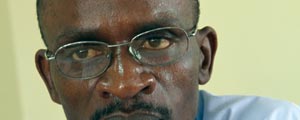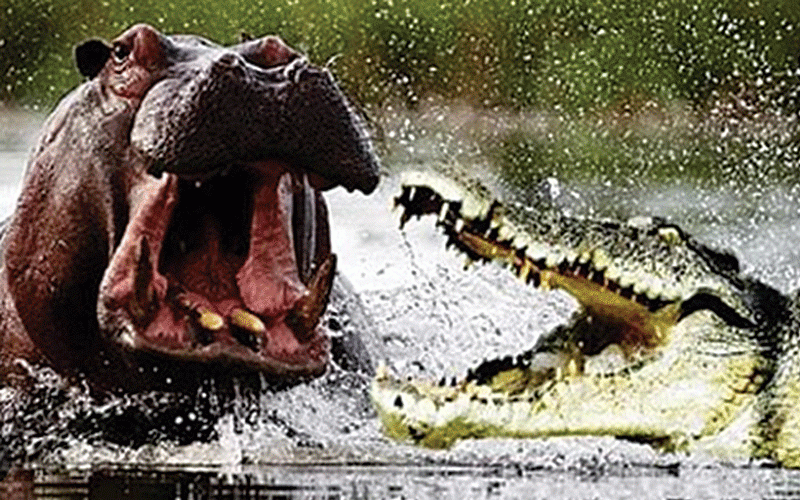
ON May 3, we marked the 20th annual World Press Freedom Day, a time to review the state of Press freedom around the globe and honour the journalists who have died doing their jobs.
View Point with Wisdom Mdzungairi
We also noted that the challenges media workers face have evolved considerably since this day was established two decades ago.
In particular, besides threats to their physical safety, journalists now confront increasing threats to their digital safety. From having their laptops and mobile phones confiscated or stolen, to more insidious online attacks and surveillance, media workers are exposed to a complex array of digital dangers that put themselves, their families and their sources at risk.
In fact, hardly four days after we celebrated Press Freedom Day, Zimbabwe Independent editor Dumisani Muleya and reporter Owen Gagare were arrested and then released, igniting fears of the onset of a wider crackdown on journalists as Zimbabwe heads for a high stakes election.
Should we or not prepare for a new onslaught on Press freedom regardless of the merits of the issues? Journalists should just write about everything that may touch on people’s lives — politics, social, business or the changing climate.
So who’s covering local climates? That is still work in progress! But fast-growing Africa could be a dominant force in the world’s economic landscape for decades to come if the continent gets its act together (and uphold freedom of the Press).
Africa is “one part of the world that has got a very high growth rate that is accelerating”. But to harness the boom, leaders must be tolerant, improve technology, education, and promote freeness of speech and the rule of law, including reducing corruption.
- Chamisa under fire over US$120K donation
- Mavhunga puts DeMbare into Chibuku quarterfinals
- Pension funds bet on Cabora Bassa oilfields
- Councils defy govt fire tender directive
Keep Reading
If all of those things happen, this is going to be our decade. A role for Zimbabwe is to act to allow the continent to economically, socially and politically behave as one, through infrastructure, broad-mindedness, media freedom and trade links. Because if it can, then my goodness me, it is not only the next decade, it is going to be the next three or four.
Since the discovery of alluvial diamonds in Chiadzwa, there have been counter accusations back and forth over whether the way the diamonds were selling in India was transparent enough. While India might be losing its status as the world’s largest hub for diamond cutting and polishing to China, few Indians have achieved a significant breakthrough by creating the world’s largest diamond mine for growing rare, colourless diamonds.
Highfield East MP Pearson Mungofa and the Lovemore Kurotwi-led Zimbabwe Diamond Centre own two of the largest diamond cutting centres in the country, but argue that “red tape” has stalled the flow of diamonds for cutting and therefore beneficiation. The price for accessing diamonds is so prohibitive so much as to discourage local diamond cutters — bureaucracy at its worst! Locals are expected to fork out $300 000 upfront while Indians are simply not required to pay this much upfront. This has bunged the expansion of the local diamond industry.
Yet, Zimbabwe can offer the industry a consistent supply, both in terms of quantity and quality, making diamonds available for use in a variety of applications where they are tested but are currently not available. The local diamond cutters’ plants are the biggest environmentally sustainable diamond growing facilities in the world. The stringent rough diamond supply and increasing rough prices have hit local industry very badly leading to loss of business and unemployment.
Zimbabwe could, however, take advantage of China’s aggressive “Africa invest” policy, which has made it a prominent centre of diamond cutting and polishing. Between 2006-11, when globally there was a 3% fall in rough diamond supply, China recorded an over 20% increase in its rough diamond imports in carat terms and a 55% increase in value terms.
China has a vested interest in developing Africa’s infrastructure through loans underwritten by the continent’s vast natural wealth. The China Development Bank last year announced it could invest up to $10 billion in Zimbabwe’s mining and agro sectors — the investment is being repaid by diamonds.
The local industry believes that they can get a fairly large share of diamonds for cutting and polishing and secure their livelihood. The increasing acceptance of diamonds in western markets is a good sign. The very fact that these diamonds are conflict free, eco-friendly and sustainable — creating economic growth opportunity from jewellery to hi-technology industry makes its future very promising.
It’s up to our legislators how they can ensure that the diamond industry is able to leverage this opportunity to create more employment, generate forex and achieve Task Force aim of making Zimbabwe the largest hub for diamond cutting and polishing. And journalists should play their role without fear of riling the system!











